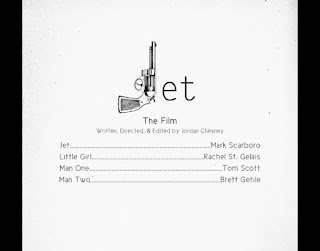CR
Bedlam, my short film, was created to represent the interworks of mental illness. To be specific, the one we presented was schizophrenia. My film's aim was to present your typical cinema yet identify the intricate qualities of schizophrenia. Schizophrenia can be considered an overlooked mental illness, and our aim was to address how this can be interpreted. In present day, society constantly acknowledges what mental illness is, yet undermines how it affects the average human. In Bedlam, we decided to aim our purpose at the interworking's of these conditions. Throughout our Bedlam film, educating and connecting with viewers about the reality of mental illness was our main concern. In the opening sequence of our film, we showed a first-person perspective of Luna's perspective. This idea was meant to really dived into depth of the visions of what the conscious is of the protagonist. This experience was aimed to really show how the character views her reality. With my characters condition, every blurry step she took was a small vision of her everyday life. In order to present the workings of her illness, the clip of her walking mirrored disorientation, a common attribute of schizophrenia. I this case, my character was almost a "spectator" in her own life. I decided to depict my characters struggles upon her medication and comprehension, mirroring the struggles faced by those with schizophrenia. As a turn of events, my character showed the receiving of medication, serving as the true natures of schizophrenia.
For branding purposes, we set up social media accounts on Instagram, Twitter, Facebook, and YouTube, along with creating a website and postcard, all aimed at promoting our film and increasing views. Although the initial goal was simply promotion, these platforms ended up adding depth to our film. Our social media shares behind-the-scenes moments, funny bloopers, updates on upcoming film festivals, and resources for mental health. Similarly, our website includes reviews, casting details, and a synopsis. What tied everything together was ensuring consistency across our social media, website, and postcard with images or backgrounds conveying disorientation, using the same font or wording, and emphasizing mental health awareness. This repetition might seem redundant, but it was crucial for coherence. We also integrated mental health resources and themes throughout our content to underscore its importance. Even our film's title, "Bedlam," which means chaos or confusion, aligns with our branding theme. This attention to detail is what makes effective branding, creating a cohesive identity that resonates with our audience.
Even though most viewers just skim the project's past, we went further into it because we knew it was important for branding and other reasons. Hitting the feelings was our major objective, you know? We went for that spooky, captivating vibe since we assumed that people are drawn to the overall enigmatic vibe. We wanted viewers to experience the same feelings as Luna, our main heroine, through eerie music selections and unsettling visuals. When the music played again at the end and she woke up, it was like a blow to the gut, confirming that everything had been in her head all along. It was like her inner thoughts were on full blast. We wanted to play with people's minds a little bit, to put them in Luna's position. It was all about making that emotional connection and illustrating from personal experience what it's like to live with schizophrenia. All in all, the intention was for the audience to experience emotion, upbringing, and shivers. This was then carried out using a variety of concepts and difficulties.
Overall, there were challenges in producing this film, however before to beginning production, we conducted extensive research. Researching a range of mental illnesses, such as schizophrenia, as well as thriller mystery writing techniques and movie marketing strategies was necessary for this. The made-up movie advertising scenarios I had imagined for my previous films actually happened this year. Film festivals are a well-liked avenue for filmmakers to get notoriety and visibility. Despite using this approach, we believed that leveraging social media to promote the video—which was created by teenagers—would be the most effective course of action. Episodes like "On the Block" often feature young artists who engage with their fans on social media by sharing humorous behind-the-scenes pictures, which piques interest and builds anticipation for new releases. Even though we weren't as well-known, we nonetheless made an effort to mimic this strategy by posting engaging content on social media platforms like Instagram. As an illustration, we uploaded a photo of me looking like Luna, clapping my hands and stating, "take one." We realized our reach was limited, so instead of trying random flicks, we went for a comedic approach.We also wanted to discuss serious subjects, such as the significance of mental health. However, it was more difficult to fit the thriller mystery film traditions into a five-minute video than a ten-minute one, which made the movie's creation challenging. Our picture had to move rapidly since it could not afford the kind of lengthy explanations and filler scenes found in other movies. We were forced to improvise as a result. This involved trimming clips, throwing away superfluous clips, and refilming overly lengthy clips. Together with my classmates, I had a great time filming this, and I believe that it could only have been accomplished with extensive research.
.


Comments
Post a Comment